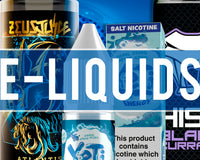A Comprehensive Guide On How Heat Not Burn Works
Heat-not-burn (HNB) technology is an innovative approach to consuming tobacco that has gained significant attention as a potential alternative to traditional smoking. Unlike conventional cigarettes that burn tobacco, Heat not burn devices heat the tobacco to a temperature that releases nicotine-containing aerosol without combustion. This process is claimed to reduce the harmful chemicals typically associated with burning tobacco. This article delves into the mechanics of heat-not-burn technology, its components, benefits, and potential health implications.

The Mechanics of Heat-Not-Burn Devices
-
Components of HNB Devices:
- Heating Element: The core component responsible for heating the tobacco. This element can be an electrically powered coil or a carbon-based heat source.
- Tobacco Stick or Capsule: Specially designed tobacco units that are inserted into the device. These sticks contain processed tobacco along with flavourings and additives. Alternatively you can opt for a zero tobacco heat stick through NEAFS which is a healthier alternative to heated tobacco sticks.
- Power Source: Typically a rechargeable battery that powers the heating element.
- Control System: Manages the temperature and duration of heating to ensure optimal aerosol production without reaching combustion temperatures.
-
Heating Process:
- Activation: When the user activates the device, the heating element is powered on.
- Temperature Control: The device heats the tobacco to a precise temperature, usually between 250°C to 350°C (482°F to 662°F). This is significantly lower than the temperatures in traditional cigarettes, which burn at around 600°C to 900°C (1112°F to 1652°F).
- Aerosol Generation: At these controlled temperatures, the tobacco releases nicotine and other volatile compounds in the form of an aerosol, which the user inhales.
Benefits of Heat-Not-Burn Technology
-
Reduced Harmful Chemicals:
- By avoiding combustion, HNB devices significantly reduce the production of harmful chemicals such as tar, carbon monoxide, and polycyclic aromatic hydrocarbons. These substances are major contributors to smoking-related diseases.
-
Less Odour:
- HNB devices produce less odour compared to traditional cigarettes, making them more socially acceptable in various settings.
-
Potential for Harm Reduction:
- Although not completely risk-free, HNB products may pose a lower risk than conventional cigarettes. Some studies suggest that switching from smoking to HNB could potentially reduce exposure to toxicants and carcinogens.
-
User Experience:
- HNB devices aim to closely mimic the sensory experience of smoking, providing a similar ritual and nicotine delivery, which can help smokers transition away from combustible cigarettes.
Potential Health Implications
-
Reduced Toxicant Exposure:
- Research indicates that HNB users are exposed to lower levels of harmful substances compared to traditional smokers. This could translate to a lower risk of developing smoking-related illnesses, though long-term studies are still needed.
-
Cardiovascular and Respiratory Effects:
- Preliminary studies suggest that switching to HNB products might have less detrimental effects on cardiovascular and respiratory health compared to smoking. However, the long-term health outcomes are not yet fully understood.
-
Addiction and Youth Appeal:
- Like all nicotine-containing products, HNB devices are addictive. There are concerns about their appeal to non-smokers, particularly youth, which could lead to nicotine addiction and potential subsequent tobacco use.
Regulatory and Market Considerations
-
Regulation:
- HNB products are subject to varying regulations worldwide. Some countries have embraced them as harm reduction tools, while others are cautious due to the potential unknown long-term health impacts.
-
Market Growth:
- The HNB market has seen rapid growth, driven by major tobacco companies investing heavily in this technology. Consumer interest is also rising, especially among smokers looking for alternatives.
Conclusion
Heat-not-burn technology represents a significant shift in tobacco consumption methods, offering a potential reduced-risk alternative to traditional smoking. By heating rather than burning tobacco, these devices aim to minimize the production of harmful chemicals while still delivering nicotine and a smoking-like experience. While the potential benefits of HNB products are promising, comprehensive long-term studies are essential to fully understand their health implications and ensure informed regulatory decisions. As the market and regulatory landscape evolve, HNB technology will continue to be a focal point in the ongoing discussion about harm reduction and public health in the context of tobacco use.




